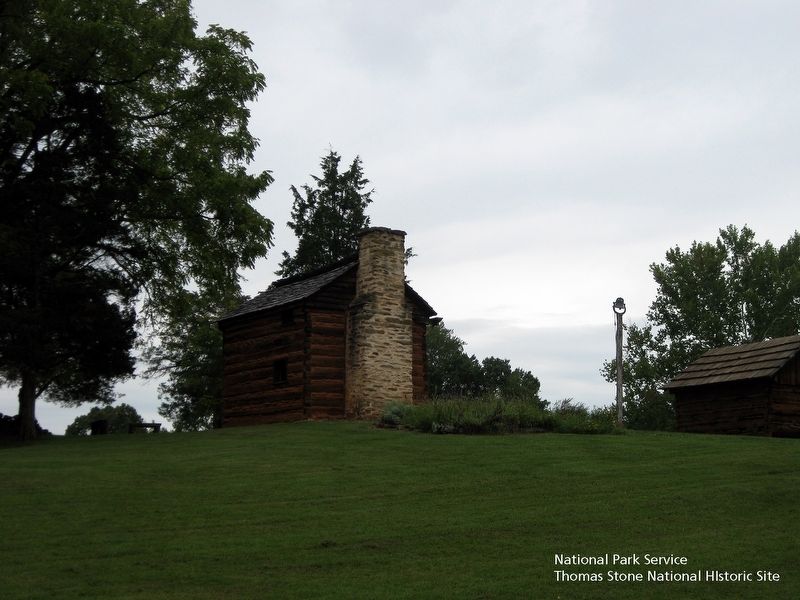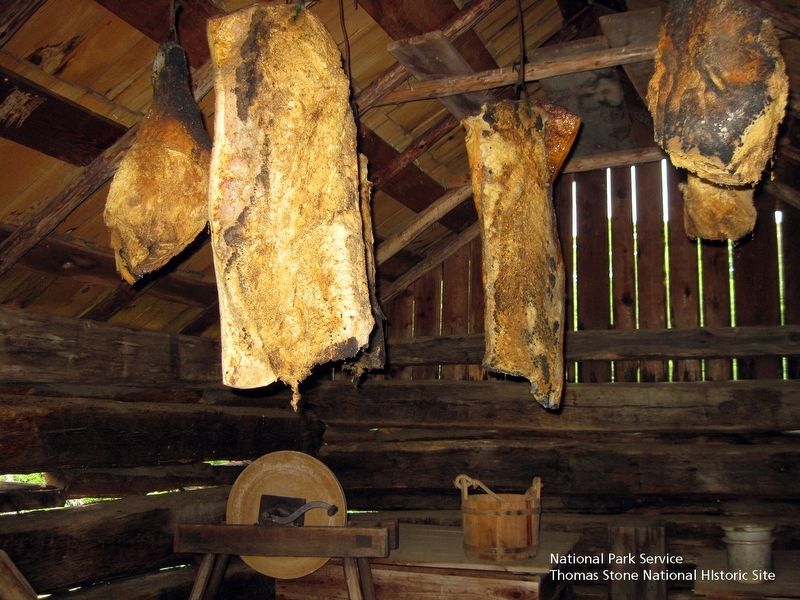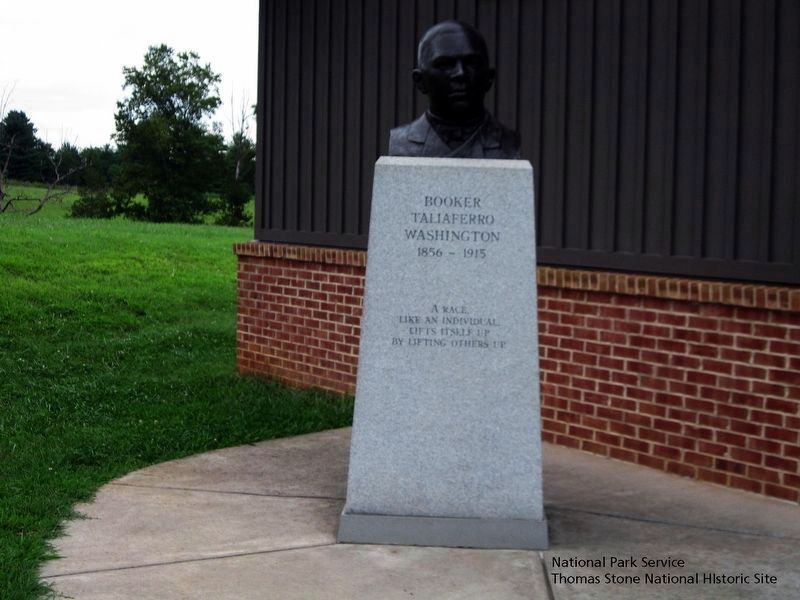Hardy in Franklin County, Virginia — The American South (Mid-Atlantic)
Booker T. Washington National Monument
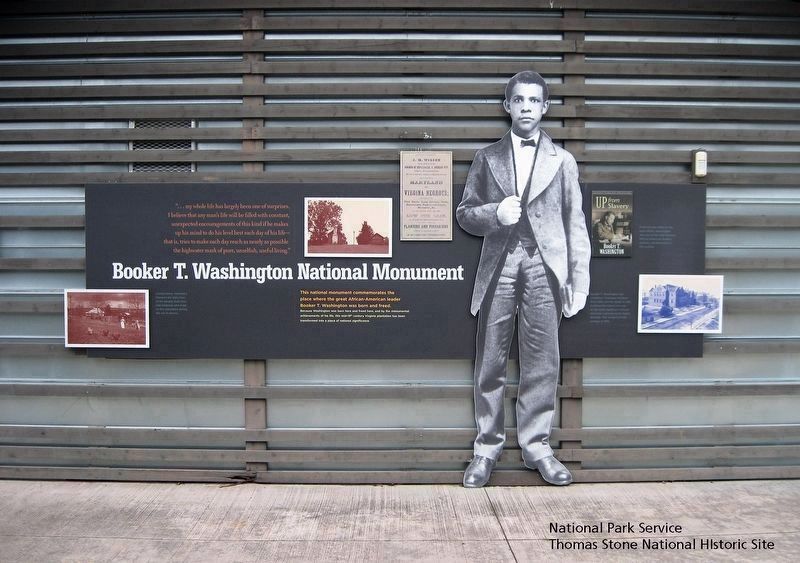
National Park Service, Thomas Stone National Historic Site, August 18, 2018
1. Booker T. Washington National Monument (Entire marker)
Viewing marker from the west. Two inset red & white images of site. Inset advertisement for the sale of enslaved people. Black & white cut-out of Booker T. Washington. Inset color image of the cover of Washington's "Up from Slavery." Inset blue & white image of Tuskegee Institute.
This national monument commemorates the place where the great African-American leader Booker T. Washington was born and freed.
Because Washington was born and freed here, and by the monumental achievements of his life, this mid-19th century Virginia plantation has been transformed into a place of national significance.
(captions)
Living history volunteers interpret the daily lives of the people, both free and enslaved, who lived on this plantation during the era of slavery.
From the late 1800s to the early 1900s, Washington was one of the most famous African-American leaders, authors, and educators in the country.
Booker T. Washington led Alabama's Tuskegee Institute from 1882 until his death in 1815., building the school into one of the most significant African-American institutions for higher learning. This image is of the campus in 1916.
(inset image)
J. M. Wilson
having removed to
the corner of Esplanade and Moreau Sts.
New Orleans,
Will keep on hand and he constantly receiving during the season,
large supplies of Maryland
and
Virginia Negroes;
consisting of
Field Hands, House Servants, Cooks, Seamstresses,
Washers and Ironers, Mechanics, &c,
all of which will be sold
low for cash,
or, on time, for good city acceptance.
Planters and purchasers
generally are respectfully invited
to call and examine before purchasing elsewhere.
Erected by Booker T. Washington National Monument, National Park Service.
Topics. This historical marker and monument is listed in these topic lists: African Americans • Agriculture • Education.
Location. 37° 7.173′ N, 79° 43.901′ W. Marker is in Hardy, Virginia, in Franklin County. Marker can be reached from Booker T Washington Highway (Virginia Route 122) 0.2 miles east of Lost Mountain Road (Virginia Route 636), on the right when traveling east. Marker is located on the west side of the structure with the restrooms next to the Visitor Center. Touch for map. Marker is at or near this postal address: 12130 Booker T Washington Hwy, Hardy VA 24101, United States of America. Touch for directions.
Other nearby markers. At least 8 other markers are within 4 miles of this marker, measured as the crow flies. Slavery on the Plantation (a few steps
from this marker); Booker T. Washington's Birthplace (a few steps from this marker); How Tobacco Farms Used Slavery (within shouting distance of this marker); Freed Here, At Last (within shouting distance of this marker); Booker T. Washington Birthplace (about 700 feet away, measured in a direct line); Jack-O-Lantern Branch Trail (approx. ¼ mile away); I think that I owe a great deal of my present strength and ability to work to my love of... (approx. 0.7 miles away); Taylor’s Store (approx. 3.4 miles away). Touch for a list and map of all markers in Hardy.
Also see . . .
1. Booker T. Washington National Monument, National Park Service. (Submitted on August 17, 2019.)
2. Dr. Booker Taliaferro Washington, Tuskegee University. (Submitted on August 17, 2019, by David Lassman of Waldorf, Maryland.)
3. Booker T. Washington National Monument, National Register of Historic Places. (Submitted on August 17, 2019.)
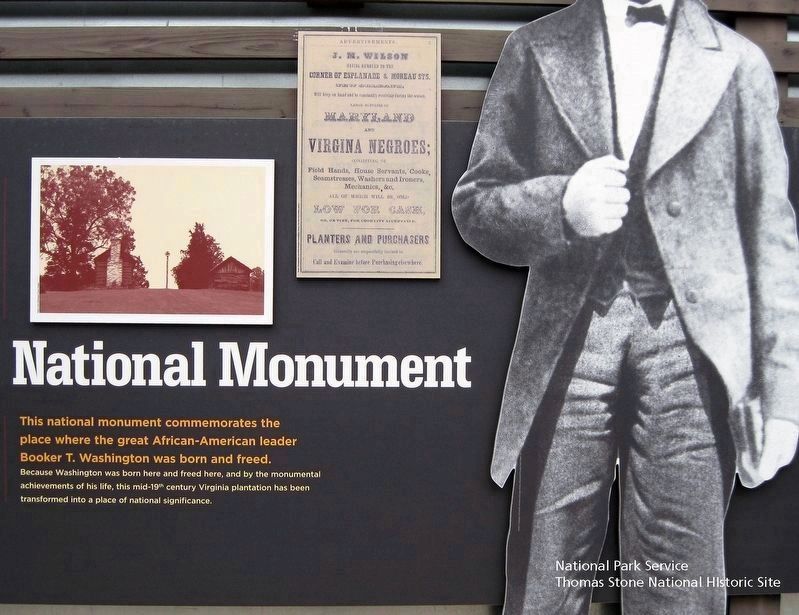
National Park Service, Thomas Stone National Historic Site, August 18, 2018
3. Booker T. Washington National Monument (Center 1/3 of marker.)
Viewing marker from the west. Inset red & white image of site. Inset advertisement for the sale of enslaved people. Black & white cut-out of Booker T. Washington.
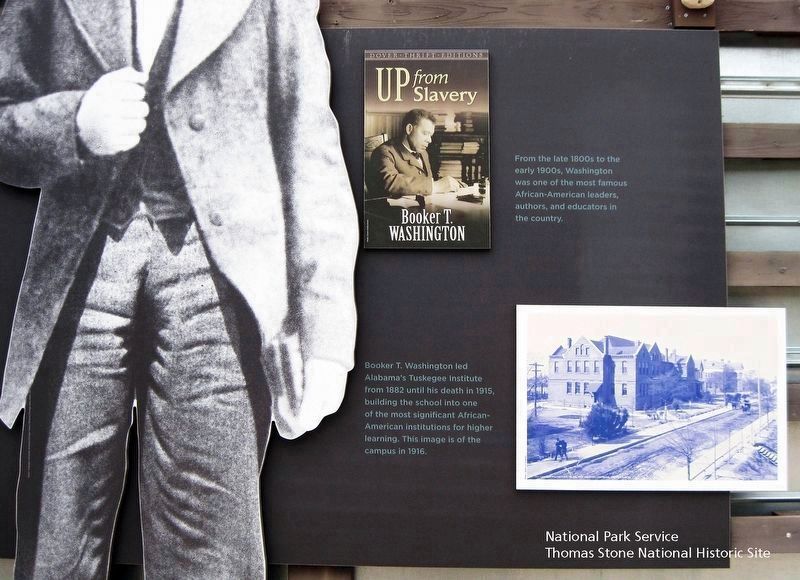
National Park Service, Thomas Stone National Historic Site, August 18, 2018
4. Booker T. Washington National Monument (Right 1/3 of marker.)
Viewing marker from the west. Black & white cut-out of Booker T. Washington. Inset color image of the cover of Washington's "Up from Slavery." Inset blue & white image of Tuskegee Institute.
Credits. This page was last revised on November 20, 2019. It was originally submitted on August 17, 2019. This page has been viewed 210 times since then and 27 times this year. Photos: 1, 2, 3, 4, 5, 6. submitted on August 17, 2019. 7. submitted on August 19, 2019. • Bernard Fisher was the editor who published this page.

